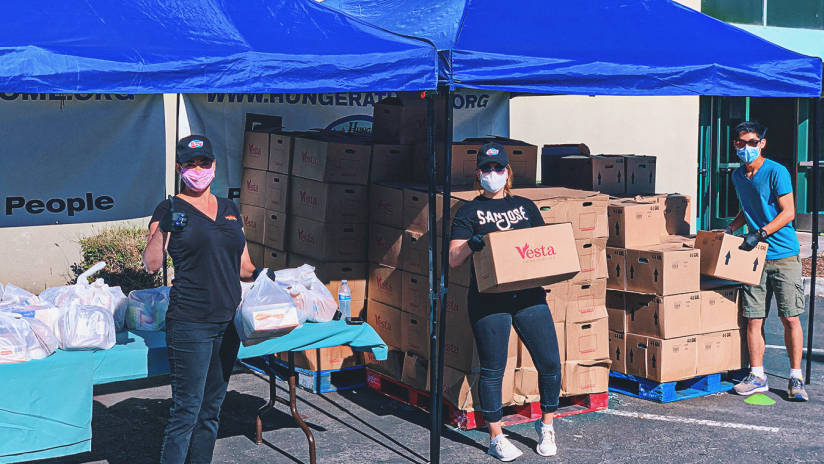The Quakes and Wells Fargo are humbled and inspired by the amazing work of our frontline communities and neighbors in this time of crisis. Each week, we’ll be featuring and highlighting the work of one fantastic neighborhood hero, showcasing the great work they are doing and the organizations our community can rally around.
Additionally, a donation will be made to an organization or community project on behalf of each week’s hero. This week we will be donating to Hunger At Home.
In the Bay Area, one in four individuals are food insecure.
Witnessing the problem firsthand after volunteering at a food bank, Ewell Sterner and his son Casidy wondered what more could be done to assist the needs of food-insecure individuals and families. Inspired into action, Ewell started Hunger At Home in San Diego in 2008. In 2015, they founded a new base of operations in downtown San Jose.
Hunger At Home functions as a conduit between the business and nonprofit communities to redistribute excess food and goods to community members in need. They partner with various hotel chains, entertainment venues, stadiums and more to get excess food into the hands of the hungry.
Hunger At Home has experienced massive growth, from the early days of Hunger At Home feeding around 5,000 meals a year, to now exceeding 1 million meals a year.
“It takes a lot of strategy,” says Ewell. He and his team have to know and understand the algorithm of what to expect from each donor and how to orchestrate distribution between recipients.
They can typically expect a venue like Levi’s Stadium or Hilton Hotels to have a certain range of food in pounds leftover for donation at the end of an event. Food is brought back to their distribution site, or they are met with other nonprofit representatives such as food banks to divide up the surplus food.
March 19 was a significant turning point for Hunger At Home. When COVID-19 hit, hotel partners shut down, venues closed, and sports teams' seasons were halted. While their path to receiving food donations now required urgent redirection, the needs of food-insecure individuals and families exploded.
In response, Hunger At Home received donations from local farms, and big distribution companies like Sysco in full pallets of fresh food. Since March 19, they have received over 375 donated pallets and have produced and distributed over 400,000 meals in less than three months.
Despite the complications, Hunger At Home was greatly supported by local hospitality within the San Jose community. Their staff of three is joined by a network of anywhere between 10-25 volunteers on a regular basis. Ewell and his team share a passion of “people helping people.”
Those who lost their jobs or had limited work hours offered their services and skills to give back. Hotel chefs and cooks out of work have even come in to volunteer cooking full sheet-pan family-sized meal trays.
Just as much as food production has a massive carbon footprint, waste has a similar negative effect. “40% of all food globally is wasted,” says Ewell. The Hunger At Home team is working to bridge the gap in the most eco-conscious way. “It’s the right thing to do for the planet,” he says.
Over the years, Hunger At Home has received much positive support back from the community. Corporate sponsors, private entities, nonprofit partners and even local leaders have reinforced the work they are doing. But the need still exists and will continue to grow if not proactively met. “If not us, who? If not now, when?” says Ewell.
For more information on Hunger At Home or to learn how to get involved, visit https://hungerathome.org/.




